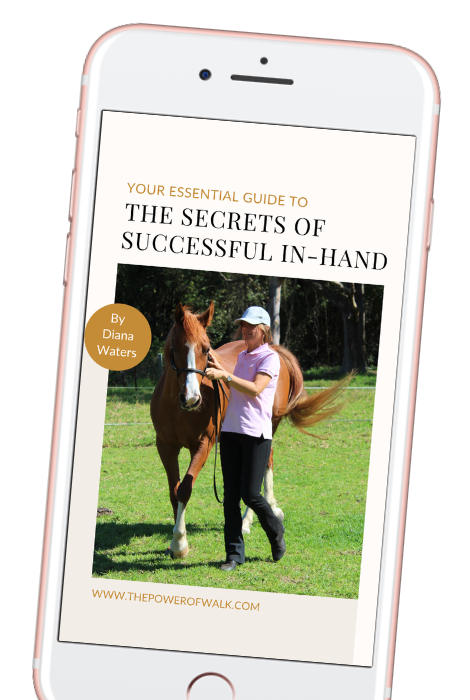
Walk Work Wisdom
I just read a really good article on walk work. Here’s the link:
The article talked about the benefits of walk work and how to carry it out. In general, the article was excellent and I agree with nearly all the points made. However, there was one sentence that I would like to unpack a little:
“Whatever you practice, there needs to be sufficient activity—not only for the sake of the training itself, but also as an indicator that the horse is attentive. A lazy, shuffling horse indicates that he’s not listening to his rider, whereas a diligent horse does the opposite.”
This statement, whilst true in some ways, is problematic because it leads people to assume that in order to carry out walk work we must focus on asking the horse to be more active. In fact, this is not the case.
When I work in walk, the tempo is often very slow, the energy is often low, and there are often pauses in the gait as the horse process, but pretty early on in the work, joints begin to flex and extend more smoothly and completely. I’m assuming that this is what the author means by “activity”, but I want to unpack a problem that is often seen by people in the pursuit of “activity.”
How do we generate activity?
On many occasions, I have watched a horse being driven forward in a fast walk in a groundwork lesson. The horse may have been a little slow and inattentive, dragging the hinds, and visibly falling in. The instructor shouts: “Maintain the rhythm. More activity!” The handler taps smartly with the whip, clicks the tongue, and the horse swishes the tail. Tap, click, swish. The horse goes faster, and apparently straighter. Tap, click, swish, click, tap, swish. “Good job!”
I have heard a number of claims being made that straightness and alignment can be corrected by “activating” the inside/outside hind. There are a number of issues with this approach.
The hind legs will naturally increase in their flexion, and the hindquarters increase in their engagement/lowering as the horse comes into alignment. This happens because everything lines up and blockages/braced muscles release. Now it becomes easier for the horse to carry themselves in an uphill posture, which they will choose when we ask for lateral work that is carried out most efficiently in this posture.
However, if the horse is misaligned and crooked (often resulting from the muscles on the outside of the bend being braced), trying to make the hind more active by increasing an aid and asking “more” will result in unhealthy compensations, because asking for more does not release any bracing. It doesn’t matter whether you are asking for faster, more flexion, more energy: if the body is blocked by braced muscles, the increased aid won’t help. The horse won’t be able to do what you are asking.
This is analogous to a tap being turned on with greater water pressure to blow a kink out of the hose. When the tap is turned off, the kink returns.
As soon as you remove the driving aid, the horse returns to crooked and “lazy”.
If I work with a horse that is “lazy” and dragging the hinds, I usually begin with releasing through intuitive touch in halt. Then, I move onto slow work, BUT I do not demand “activity”. Activity is a symptom of correct work, and not the cause of correct work. Often the dragging hinds are a result of tightness and braced muscles in the hindquarters, which are usually associated with tight muscles in the neck. Once the neck muscles are released in halt, I begin to ask the horse to move forward calmly and as slowly as they are comfortable with. I release the horse to stretch the head and neck forward, and then I ask them to slow the steps and lift the forehand. Once we have mobility and the muscles have stopped bracing, we work on straightness, always maintaining alignment. This means that less is more: Small angles and subtle bend. These creates strength, stability and straightness from the released muscles and aligned body.
Now, if you look at the horse you will notice activity. The joints flex and move through a bigger range of movement. The hinds no longer drag or shuffle, and the horse is attentive and alert. We have activity: The walk is active, as the author of the article stipulated. However, in order for us to get there, it was necessary to first allow less activity. So now you can see how the statement could be interpreted in a way that is problematic.
As an aside, it was pointed out to me that the release work is “nice, but I wouldn’t call it training.” I think it is a shame that the importance of understanding the body and responding to its needs in the moment is not generally considered an integral part of training. (This may not always involve intuitive touch but can be instigated in other ways such as through flexions and jaw release). The more I learn, the more I believe that training cannot be taken as a stand-alone A muscle is tight and braced right now: it needs to be released. People like to put things in boxes: “Sorry horse, we are training right now, not bodyworking.”



